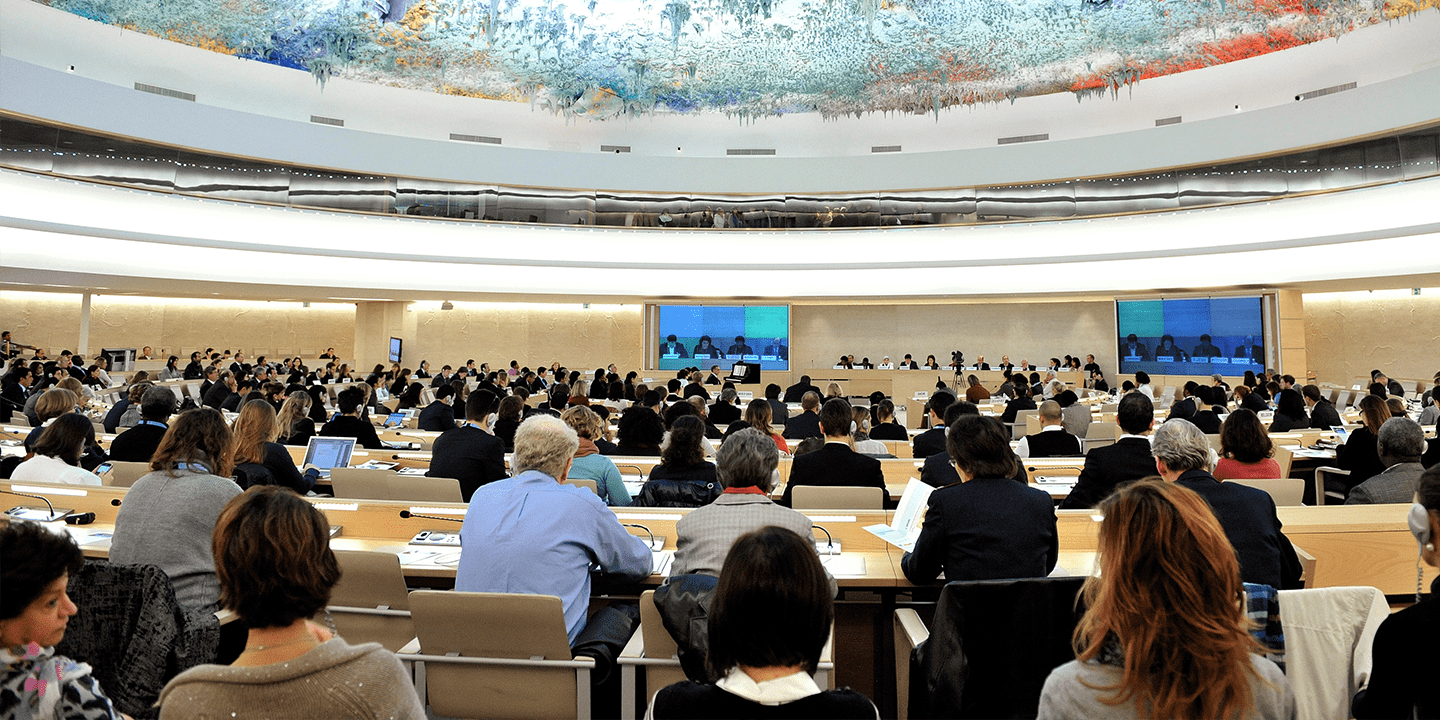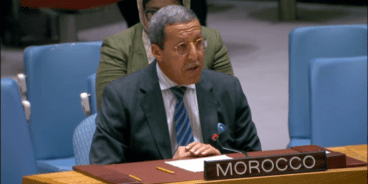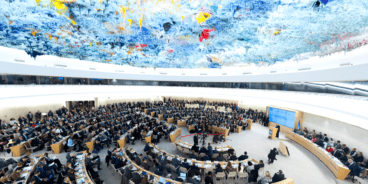
Statement delivered on behalf of the Group of Friends of R2P on Item 2 at the 41st session of the Human Rights Council
The following statement was delivered by the Netherlands on behalf of members of the Group of Friends on R2P on Item 2 – Annual Report of the United Nations High Commissioner for Human Rights at the 41st session of the Human Rights Council.
Mr. President,
I have the honour to deliver this statement on behalf of members of the Group of Friends of the Responsibility to Protect*.
The Group of Friends of R2P thanks the High Commissioner for her update. Over the past years, the Group of Friends of R2P has continuously emphasized the link between the Responsibility to Protect and Geneva-based human rights mechanisms and institutions. As the primary international human rights body, the Human Rights Council, through its procedures and mechanisms, is particularly well suited to apply preventive measures in situations where early warning signs of possible atrocities arise. Preventing widespread violations and abuses of human rights is crucial to avoid them developing into mass atrocities. It is our individual and collective responsibility to prevent that from happening. We further thank the High Commissioner for highlighting the link between human rights violations and impunity.
In this regard, we would like to thank the High Commissioner and her office for their preventive efforts in promoting human rights including through the World Programme of Human Rights Education as well as in highlighting violations and abuses of human rights and identifying patterns of systematic discrimination against individuals and groups. The identification of risk factors and early warning signs is essential to prevent widespread violations and abuses of human rights that could potentially lead to mass atrocities. We therefore encourage the Office of the High Commissioner to continue to provide regular information to the Human Rights Council and the UN General Assembly, and to provide briefings to the UN Security Council, within her mandate. The promotion of a coherent and comprehensive approach to mass atrocity prevention across the different UN-bodies is key in upholding our responsibility to protect. We further encourage the Office of the High Commissioner for Human Rights to continue and strengthen the engagement with the Special Advisers on the Prevention of Genocide and the Responsibility to Protect.
Besides regular HRC sessions, special procedures, treaty bodies and the Universal Periodic Review are also key mechanisms for atrocity prevention and have often contributed to the early warning of atrocity crimes. In addition, Human Rights Council-mandated investigative mechanisms can play an instrumental role in documenting patterns of widespread human rights violations, identify perpetrators of possible mass atrocity crimes, and strengthen accountability processes. Together, this can have an important deterrence effect to prevent the recurrence of atrocities.
In addition, the Human Rights Council and its procedures plays a crucial role in strengthening states’ individual efforts to prevent mass atrocity crimes. By providing timely and targeted technical assistance and capacity building measures, states are able to strengthen respect for the rule of law and good governance and consolidate effective and accountable national institutions, which are key elements for effective atrocity prevention. Côte d’Ivoire, which has previously benefitted from technical assistance and capacity building by an Independent Expert, serves as an example of how the HRC can contribute to strengthening domestic institutions and national processes for structural prevention and guarantees of non-recurrence.
In line with the recommendations from the latest SG report on the Responsibility to Protect, we underscore the importance of enhancing prevention efforts at grassroots level, for which assisting domestic, regional and local actors and institutions remains vital. Furthermore, partnerships and cooperation between UN human rights mechanisms, within their mandates, and national actors can ensure that atrocity prevention is both a bottom-up and top-down process. All in all, the variety of human rights mechanisms and institutions allow for context- specific and comprehensive preventive action.
However, where early warning signs and risk factors are being identified, timely and sustained action should follow in accordance with the UN charter. The international community must increase efforts when it comes to early action, as outlined in the Secretary General’s 2018 and 2019 reports on the Responsibility to Protect.
We strongly believe that this Council, and all UN Member States, can, and should do more to make the responsibility to protect a living reality.
Thank you.
*Netherlands, Rwanda, Botswana, Côte d’Ivoire, Ghana, Liberia, Mali, Morocco, Mozambique, Nigeria, Senegal, Sierra Leone, South Sudan, Tanzania, Bangladesh, Japan, Qatar, Republic of Korea, Singapore, Argentina, Chile, Costa Rica, Guatemala, Peru, Mexico, Panama, Uruguay, Belgium, Bosnia-Herzegovina, Croatia, Czech Republic, Denmark, European Union, Finland, France, Germany, Hungary, Italy, Liechtenstein, Luxembourg, Norway, Romania, Slovakia, Slovenia, Spain, Sweden, Switzerland, United Kingdom, Australia, New Zealand, Canada

